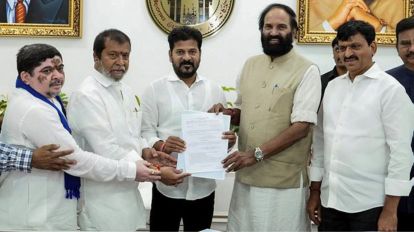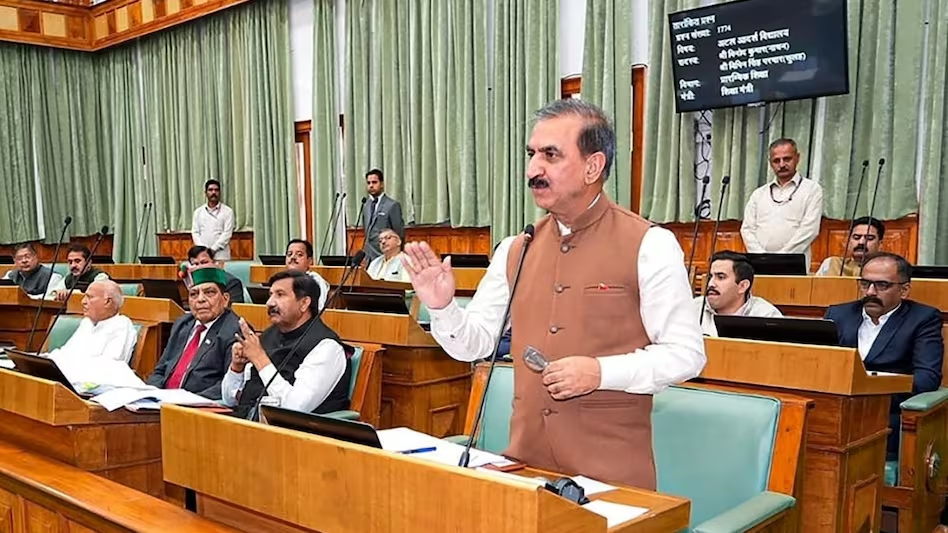- Courses
- GS Full Course 1 Year
- GS Full Course 2 Year
- GS Full Course 3 Year
- GS Full Course Till Selection
- Answer Alpha: Mains 2025 Mentorship
- MEP (Mains Enrichment Programme) Data, Facts
- Essay Target – 150+ Marks
- Online Program
- GS Recorded Course
- Polity
- Geography
- Economy
- Ancient, Medieval and Art & Culture AMAC
- Modern India, Post Independence & World History
- Environment
- Governance
- Science & Technology
- International Relations and Internal Security
- Disaster Management
- Ethics
- NCERT Current Affairs
- Indian Society and Social Issue
- NCERT- Science and Technology
- NCERT - Geography
- NCERT - Ancient History
- NCERT- World History
- NCERT Modern History
- CSAT
- 5 LAYERED ARJUNA Mentorship
- Public Administration Optional
- ABOUT US
- OUR TOPPERS
- TEST SERIES
- FREE STUDY MATERIAL
- VIDEOS
- CONTACT US
Telangana Becomes First Indian State to Implement SC Sub-Categorisation
Telangana Becomes First Indian State to Implement SC Sub-Categorisation

Categorisation in the Reservation System
- Categorisation refers to the classification of the population into broad social groups such as Scheduled Castes (SCs), Scheduled Tribes (STs), Other Backward Classes (OBCs), and the General category.
- These categories are recognised based on historical discrimination, untouchability, social exclusion, and systemic oppression.
- The Indian Constitution provides affirmative action through reservations in education, public employment, and political representation to uplift these disadvantaged groups.
- The SCs are recognised under Article 341, STs under Article 342, and OBCs under Article 340.
- However, despite these measures, inequality continues within each category, with some castes advancing significantly while others remain left behind.
- This inequality within reserved categories led to the idea of sub-categorisation for equitable internal distribution of benefits.
Arguments For and Against SC Sub-Categorisation
|
Aspect |
Arguments For |
Arguments Against |
|
Targeted Support |
Prevents dominant SC groups from monopolising benefits; addresses gaps from unreleased SECC 2011 data. |
Risks becoming a political tool and may deepen caste divisions. |
|
Addressing Inequalities |
Recognises internal heterogeneity in SCs (e.g., Malas vs Madigas). |
May fragment SCs further and weaken their collective political voice. |
|
Constitutional Backing |
Articles 15 and 16 empower states to make special provisions; backed by latest SC ruling. |
Critics say it distracts from dismantling larger caste-based hierarchies. |
The Supreme Court’s 2024 verdict and Telangana’s bold policy move mark a new chapter in reservation policy, focusing not just on broader inclusion, but intra-group justice. If implemented effectively and backed by robust data, SC sub-categorisation could serve as a model for other Indian states to replicate — ensuring that no community is left behind in the quest for equality.
|
Group |
No. of Sub-Castes |
Reservation Share |
Key Description |
|
Group I |
15 |
1% |
Most backward SCs; only 0.5% of the population |
|
Group II |
18 |
9% |
Marginally benefitted sub-castes |
|
Group III |
26 |
5% |
Relatively better-off among SCs |
- 33 out of 59 sub-castes remained in the same group, while 26 were shuffled, affecting about 3.43% of SC population.
- This sub-categorisation applies to new recruitments and educational admissions only, not to already notified vacancies.
- The reservation quotas will be updated further after the 2026 Census data is released.
Based on the Commission, the state reclassified 59 SC sub-castes into three major groups:
|
Demographic Context (Census 2011) As per Census 2011:
|
Classification of 59 SC Communities in Telangana:
In 2023, Telangana government constituted, Justice Shameem Akther Commission to examine the issue of inequitable distribution of reservation benefits among SCs in the state. The Commission submitted its report in January 2024, recommending a three-tier grouping of SC communities with separate internal quotas to ensure intra-group justice. This move aimed to ensure that historically excluded groups like Madigas get a proportionate share in education and government jobs. Telangana plans to amend reservation rules, update databases, and collect caste-wise socio-economic data for effective implementation. Group A – Malas Group B – Madigas Group C – Rellis Group D – Others
Current Context
Following the Supreme Court’s ruling, Telangana became the first state to implement SC sub-categorisation for reservations. On April 14, 2025 (Ambedkar Jayanti), the state enacted the Telangana Scheduled Castes (Rationalisation of Reservations) Act, 2025. The state divided the existing 15% SC quota into four sub-groups, based on backwardness and population:
What Did the Supreme Court Decide in 2024?
In 2024, a 7-judge Constitution Bench headed by then CJI D.Y. Chandrachud in State of Punjab vs Davinder Singh delivered a landmark judgment. The Court overruled the 2004 E.V. Chinnaiah judgment, stating that sub-categorisation among SCs is constitutionally valid. The ruling clarified that while Article 342 allows the President to notify SCs, it does not prohibit internal classification for equitable benefit-sharing. The Court held that Articles 15(4) and 16(4) empower the State to make special provisions for socially and educationally backward sub-groups, including among SCs. It observed that reservation is not just about representation but aims at uplifting the most disadvantaged within SCs. The Court emphasized that sub-categorisation must be based on empirical data, and that states have the legislative competence to do so. This paved the way for targeted affirmative action, especially in southern states like Telangana and Andhra Pradesh, where dominant groups (like Malas) had monopolised benefits, sidelining others like Madigas. In 2010, the High Court struck down the Act again, and the case went to the Supreme Court. In 2014, the Supreme Court referred the matter to a five-judge Constitution Bench to reconsider the E V Chinnaiah ruling. In 2020, a Constitution Bench led by Justice Arun Mishra observed that courts cannot ignore ground realities and suggested revisiting the 2004 decision. In 2024, a seven-judge Supreme Court Bench was formed, which finally delivered the verdict. Davinder Singh, from a non-Balmiki, non-Mazhabi Sikh SC community, challenged this 2006 Act.
|
Constitutional Provisions Related to SCs
|
How Did the Legal Debate Begin? — The Davinder Singh Case
The issue first surfaced in Punjab (1975) when the state gave first preference to Balmiki and Mazhabi Sikh communities (the most backward SCs) within reservations. In 2006, the Punjab & Haryana High Court struck down this 1975 notification in Dr. Kishan Pal v State of Punjab. That same year, Punjab passed the Scheduled Caste and Backward Classes (Reservation in Services) Act, 2006, reintroducing the first preference. To address this, sub-categorisation of SCs involves dividing them into internal groups and allocating the 15% reservation proportionally. This does not increase the overall SC quota, but ensures that weaker sub-castes within the SC category also get fair share. The aim is intra-caste justice and removal of internal dominance, while ensuring that more backward SCs are not sidelined by the relatively better-off ones. However, the legality and constitutionality of such sub-categorisation led to major judicial interventions, starting with the Davinder Singh case. For instance, in Andhra Pradesh, Madiga and Mala are two major SC sub-castes, but Madigas remained underrepresented despite having larger numbers.
Sub-Categorisation of Scheduled Castes (SCs)
Scheduled Castes are notified under Article 341 of the Constitution and currently receive 15% reservation in central government jobs and educational institutions. However, data shows that certain castes among SCs — often numerically larger or politically powerful — have cornered most benefits.
What is Sub-Categorisation?
Sub-categorisation is the process of creating smaller sub-groups within a larger reserved category like SCs, STs, or OBCs. The objective is to prevent advanced sub-castes from monopolising reservation benefits and to include extremely backward sub-castes who are left out. For example, within the OBC category, the Rohini Commission (2017) found that out of 2,633 OBC castes, only 40 sub-castes availed 97% of the benefits. The principle of substantive equality underlies sub-categorisation — which goes beyond equal treatment and focuses on equal outcomes. Sub-categorisation helps achieve intra-group equity, where the most marginalised among the reserved groups also get proportionate access to opportunities. This idea was later extended specifically to Scheduled Castes (SCs) in several states, leading to legal and constitutional debates.



